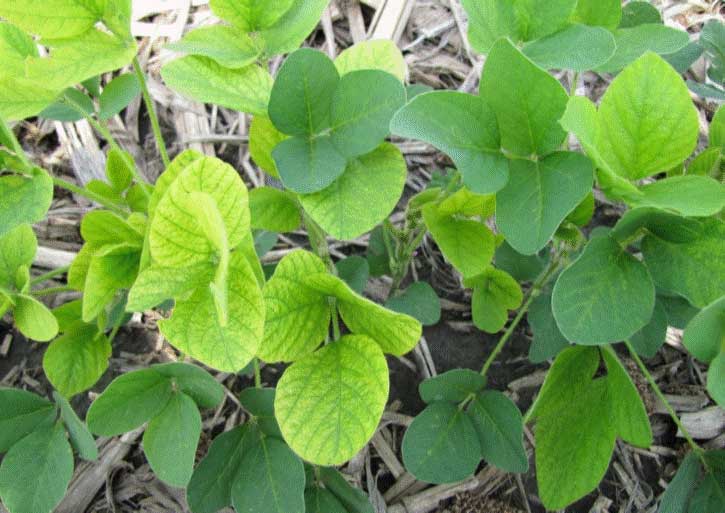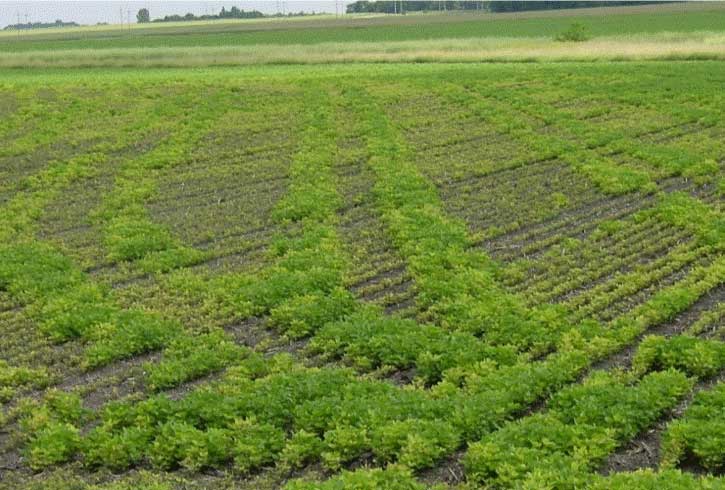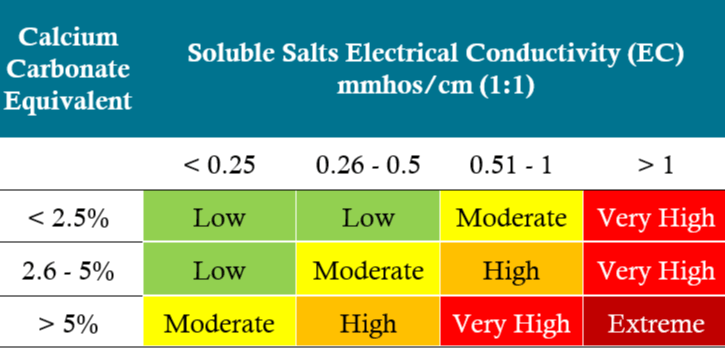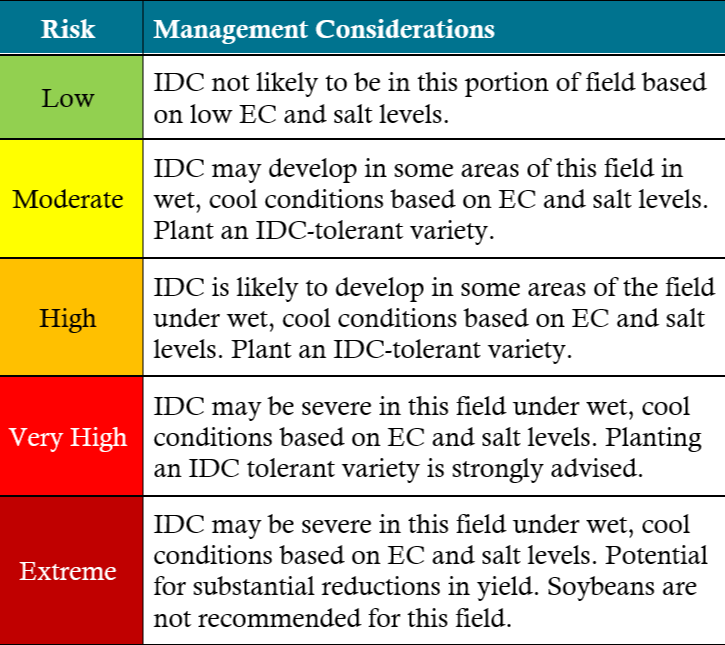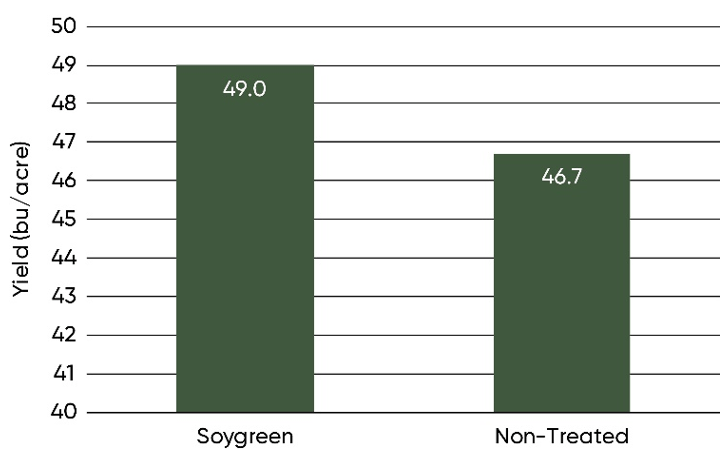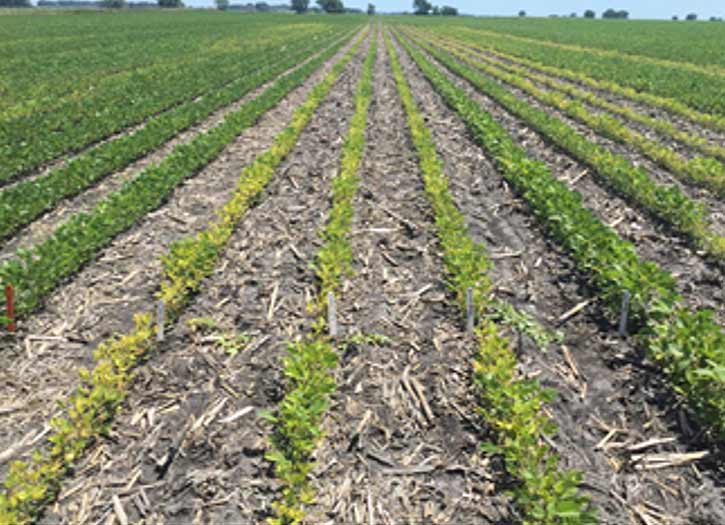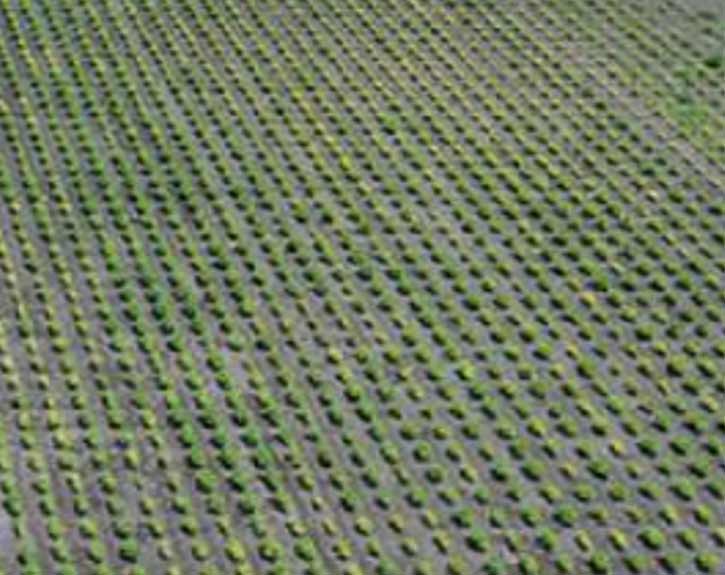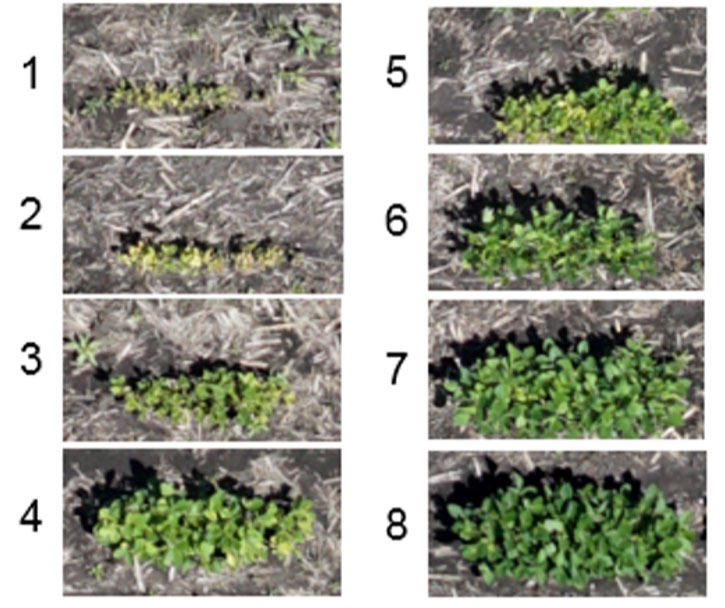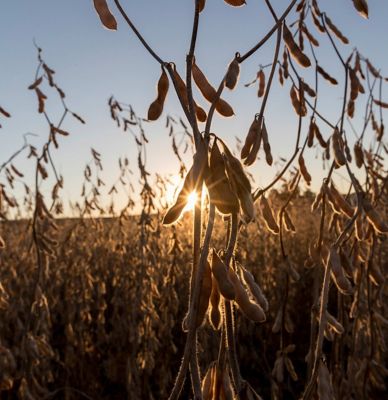A survey of soybean producers in areas affected by soybean IDC found that selection of IDC-tolerant soybean varieties was the most common management tactic (employed by 70% or respondents), followed by planting practices (42%), field drainage (33%), tillage (16%), fertility practices (11%), and herbicide selection (6%) (Hansen et al., 2003).
1. Select a Tolerant Variety
Soybean varieties vary widely in their tolerance to IDC, making variety selection the most important step in managing this problem. Corteva Agriscience has a significant research effort to characterize soybean germplasm for IDC tolerance and select for tolerant varieties. The use of genetic prediction models and multi-year field testing allows for a high degree of confidence in the IDC ratings assigned to Pioneer® brand soybean varieties. Varieties are rated on a 1 to 9 scale where 1 indicates poor tolerance and 9 indicates excellent tolerance. If growers are planting into an area with a history of IDC, they should select varieties with an IDC score of 6, 7 or 8.
Additionally, Pioneer agronomists routinely establish observation plots of soybean varieties in soils prone to IDC. Symptoms are assessed throughout the growing season to help further understand variety tolerance to IDC and optimize IDC management at the local level.
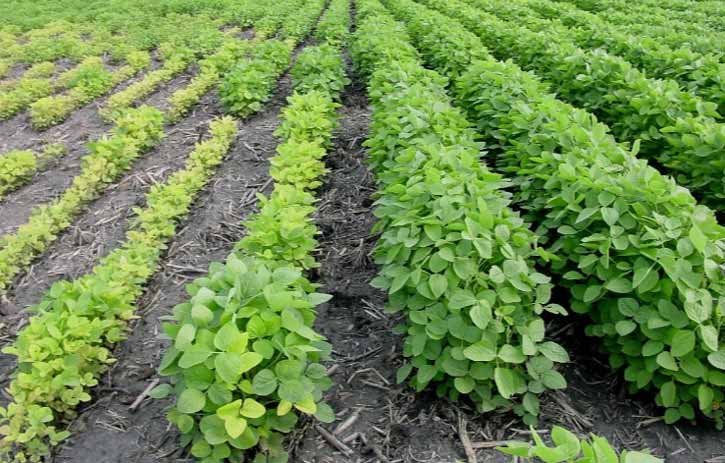
Figure 3. Pioneer soybean variety trial showing differences in IDC symptoms between a more susceptible variety (left) and a more tolerant variety (right).
2. Increase Seeding Density
University and Pioneer research studies have shown that higher seeding rates can reduce iron chlorosis symptoms and increase yield in areas of fields with a history of iron chlorosis (Goos and Johnson, 2001; Naeve, 2006). Soybean roots excrete acids as they are growing that increase the availability of iron. Higher plant density increases the amount of this acid in the root zone.
In a Pioneer study in Minnesota in a field with high soluble salt levels, chlorosis effects were more severe when plant density was low (seeding rate < 140,000 seeds/acre). Soybeans yielded from 10-15 bu/acre more at 200,000 vs. 100,000 seeds/acre. Growers should seed soybeans at densities of 200,000 seeds/acre or above for maximum protection against iron chlorosis.
Variable rate seeding allows farmers to increase seeding density in areas of the field with a history of iron chlorosis and reduce in areas that are not prone to iron chlorosis. Reducing seeding rate in areas of the field that do not exhibit iron chlorosis can help reduce pressure from white mold.
3. Improve Soil Drainage
Soils with poor drainage often have higher accumulations of soluble salts and carbonates that reduce the solubility of iron in the soil. Wet soils also lead to lower oxygen levels in the soil and reduced root growth and health. The reduction in root health and the lower solubility of iron in wet soils are major contributors to IDC symptoms. Practices that improve soil structure and water infiltration can reduce issues with IDC. Field tile drainage is also important to consider where applicable to help with soil moisture levels.
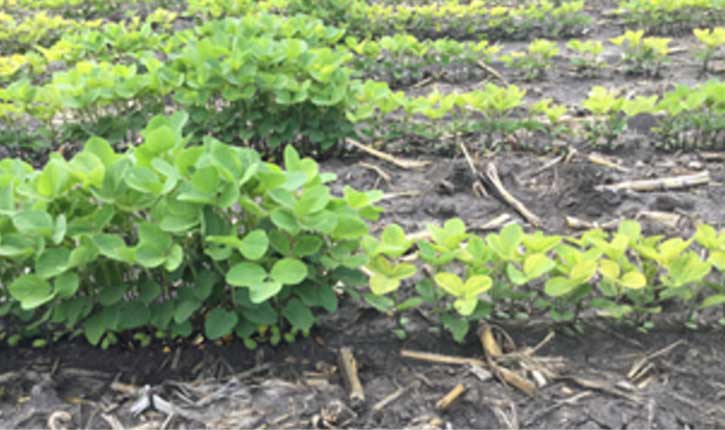
Figure 4. Soybeans showing differences in IDC symptoms at different plant densities. Soybeans on the left were planted at 200,000 seeds/acre and those on the right were planted at 140,000 seeds/acre..
4. Consider Your Herbicide Selection
Foliar and soil applied herbicides may increase plant stress which can accentuate symptomology of IDC. Research has shown increased potential for greater yield loss when applying some post-emergence herbicides to soybeans under chlorotic stress. Reduce stress from herbicides by following manufacturer recommendations for weather and application conditions.
5. Use a Companion Crop
In fields with high levels of nitrates, a companion crop of oats may reduce iron chlorosis symptomology. This companion crop needs to be terminated by the time it is 10 to 12 inches tall.
6. Iron Chelate
Pioneer Agronomists have studied the use of an iron chelate (Fe-EDDHA chelate) fertilizer to help reduce IDC symptoms and increase yields. Iron chelate products have been evaluated as seed treatments, foliar treatments, and in-furrow treatments. Benefits of seed-applied and foliar-applied treatments have been inconsistent. Research by both University and Pioneer agronomists has shown a more consistent yield response to in-furrow applications of iron chelate.
Soygreen® is a commonly used in-furrow iron chelate fertilizer that entered the market in 2006. New formulations have been added since then including a liquid formulation that is less likely to be leached out of the root zone following rainfall.
A Pioneer Agronomy study conducted in 2012 across 11 locations in Nebraska and Kansas with a history of IDC found an average yield response of 2.3 bu/acre with a 3 lbs/acre in-furrow application of Soygreen (Mueller, 2012) (Figure 5). Yield differences were minimal at some locations; however, visual differences were noted, as the varieties treated with an in-furrow application of Soygreen were greener and more robust. A similar study conducted in 2008-2009 found an average yield advantage of 3.9 bu/acre with Soygreen.
